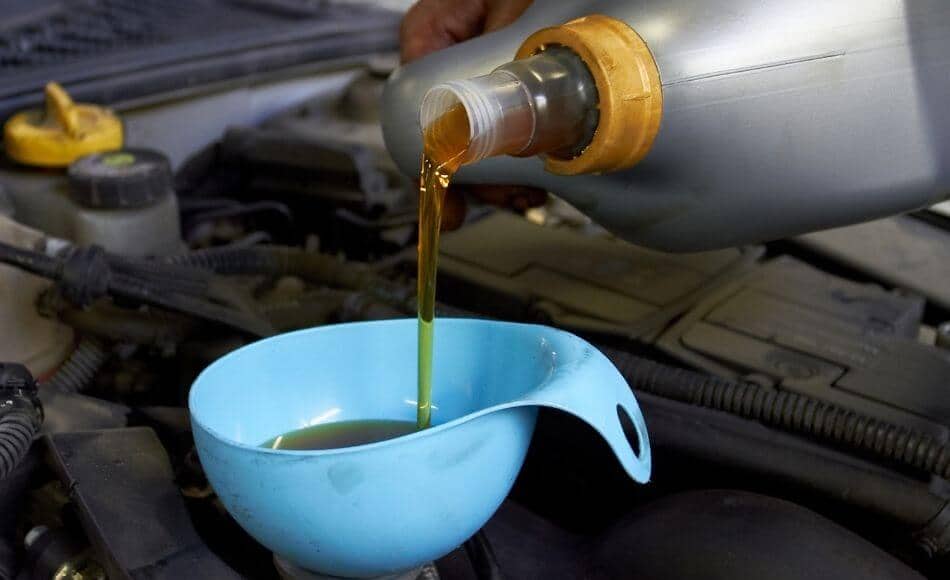How Many Miles Past Oil Change Can You Go

The age-old question plagues every car owner: how many miles can I really push it past that oil change sticker? For decades, the answer has been largely based on the 3,000-mile rule, or perhaps a more modern 5,000-mile extension. But the automotive landscape is shifting, technologies are evolving, and the future of oil changes is far more nuanced and, frankly, exciting.
Beyond the Mileage Marker: The Rise of Smart Monitoring
The days of relying solely on mileage are fading. Modern vehicles, particularly those equipped with advanced driver-assistance systems (ADAS) and sophisticated engine management systems, are increasingly incorporating oil life monitoring systems (OLMS). These aren't just timers; they're algorithms analyzing driving habits, engine load, operating temperature, and even ambient conditions. They learn how you drive and adjust the oil change interval accordingly.
Consider a vehicle predominantly used for highway driving. The engine operates at a relatively consistent temperature and load, minimizing stress on the oil. The OLMS will likely recommend an extended interval, potentially pushing it significantly past traditional benchmarks. Conversely, stop-and-go city driving, with its constant acceleration and deceleration, generates more heat and contaminants, leading to a shorter recommended interval.
Future iterations of OLMS promise even greater accuracy. Imagine sensors directly measuring oil viscosity and detecting specific contaminants. This real-time analysis would allow for hyper-personalized maintenance schedules, maximizing oil life while ensuring optimal engine performance. We might even see subscription-based services offering remote oil analysis, providing detailed reports and predictive maintenance recommendations.
The Electric Vehicle (EV) Factor: A Different Kind of "Oil Change"
The rise of electric vehicles throws a fascinating wrench into the traditional oil change paradigm. EVs don't have internal combustion engines and therefore don't require engine oil in the same way. However, EVs still utilize lubricants in their transmissions (though often sealed for life), differentials, and cooling systems. The focus shifts from frequent oil changes to periodic maintenance of these components.
The challenge lies in educating consumers about this new reality. While the absence of engine oil changes is a significant cost and time savings, neglecting other lubrication needs can lead to premature component failure. Future EVs will likely incorporate sophisticated monitoring systems for these critical lubricants, providing alerts and recommended service intervals based on usage and environmental factors. We may even see specialized "EV lubricants" formulated for extended life and enhanced performance in these unique applications.
Hybrid Systems: A Complex Middle Ground
Hybrid vehicles present a unique challenge. Their engines cycle on and off, sometimes operating under extreme loads and sometimes resting entirely. This intermittent operation can affect oil degradation differently compared to traditional internal combustion engines. While hybrid OLMS are becoming more sophisticated, accurately predicting oil life in these complex systems remains a challenge.
Future hybrid systems may incorporate active oil cooling and filtration systems to mitigate the effects of intermittent operation. Furthermore, the development of synthetic oils specifically designed for hybrid applications will be crucial to ensuring optimal engine performance and longevity.
The Challenges Ahead: Data Privacy and Standardization
While smart monitoring systems offer significant benefits, they also raise concerns about data privacy. The data collected by these systems, including driving habits, engine performance, and location, is valuable information. Ensuring that this data is used responsibly and ethically is paramount. Robust data security measures and transparent privacy policies are essential to maintain consumer trust.
Another challenge is standardization. Currently, OLMS algorithms vary significantly between manufacturers. This lack of standardization can lead to confusion and inconsistency in recommended service intervals. Efforts to establish industry-wide standards for OLMS would benefit both consumers and service providers.
The Future of Mobility: Predictive and Proactive Maintenance
Looking ahead, the future of automotive maintenance is predictive and proactive. Imagine a world where your car communicates directly with your preferred service provider, automatically scheduling maintenance appointments based on real-time data analysis. Parts are ordered proactively, minimizing downtime and ensuring that your vehicle is always in optimal condition.
This vision requires seamless integration of vehicle data, cloud computing, and artificial intelligence. The benefits are immense: reduced maintenance costs, improved vehicle reliability, and increased driver safety. It's a future where mobility is not just about getting from point A to point B, but about doing so safely, efficiently, and sustainably.
The humble oil change, once a fixed milestone, is transforming into a dynamic and data-driven process. As we embrace new technologies and navigate the complexities of electric and hybrid vehicles, we're paving the way for a future where maintenance is personalized, predictive, and ultimately, invisible. The days of arbitrary mileage markers are numbered. The future of mobility is intelligent, connected, and optimized for a world on the move. Embrace the change.
